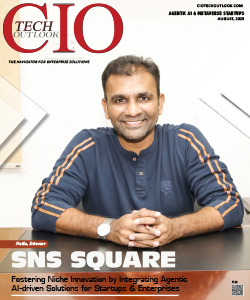Going Hand in Hand with CRM and CEM
Yagnesh Upadhyay, Group Head IT, J.M.Baxi & Co
 We all are familiar with CRM, but there is another acronym in the business of dealing with customers. CEM often provides similar functionality as CRM, but also focuses on collection of processes a company uses to track, oversee and organize every interaction between a customer and the organization throughout the customer lifecycle. The goal of CEM is to optimize interactions from the customer's perspective and, as a result, promote customer loyalty
We all are familiar with CRM, but there is another acronym in the business of dealing with customers. CEM often provides similar functionality as CRM, but also focuses on collection of processes a company uses to track, oversee and organize every interaction between a customer and the organization throughout the customer lifecycle. The goal of CEM is to optimize interactions from the customer's perspective and, as a result, promote customer loyalty
According to Gartner Customer Experience Management (CEM) is “the practice of designing and reacting to customer interactions to meet or exceed customer expectations and, thus, increase customer satisfaction, loyalty and advocacy.” It is a strategy that requires process change and many technologies to accomplish.
CRM manages the customer, CEM enables the Customer
While CRM emphasis on Customer Data, Brand Value and System Centric, CEM interacts with Customer insight, Customer Value and Customer Centric. To put it in simple form customer experience should have consistency everywhere i.e. Product People Process. With a smart phone in every consumer’s pocket, disruption is an ever-present possibility. One must work hard to be heard over the conversations about them on Facebook, Twitter and user forums. These social media and word-of-mouth platforms carry more weight with digital consumers than conventional advertising. Today’s omni-channel marketing universe requires brands to be obsessive about the consistency of their messaging across all relevant touch points. The classic “marketing funnel” is now a cycle. There is no universal formula for digital adaptation the optimal customer journey will look somewhat different for each brand, but there are six general points one should keep sight of for Customer Experience Management program.
A CEM program consists of a set of organized actions that support the goal of CEM. While a CEM program has many moving parts, an easy way to organize those pieces is depicted
- Strategy addresses how companies incorporate CEM into their long-term plans/vision/mission to help achieve its objectives and goals
- Governance describes the formal policy around the CEM program: Rules, Roles, Requests
- Business Process Integration involves embedding CEM processes/data into other business operations
- Method addresses the means by which customer feedback is collected and what gets measured
- Reporting addresses analysis, synthesis and dissemination of customer feedback
- Research is concerned with how companies provide additional customer insight by conducting deep dive research using different types of customer data
Major Points to be considered to develop a customer experience architecture:
- Increase Your Technological Versatility
To keep pace with the breakneck speed of technological change, brands will have no choice but to beef up their tech portfolio — which is why a Gartner analyst predicted that by 2017, CMOs’ IT spend will exceed that of CIOs. According to research from eBay, consumers now use, on average, up to five devices or platforms to research and complete a single purchase. The challenge here is twofold, Keeping the user experience seamless and engaging across all relevant channels, while meeting management’s ever-stricter ROI criteria.
- Customer Is King
It’s no longer sufficient to know merely who your customers are one should nowadays must know where each customer is along the journey of brand engagement. The one-size-fits-all messaging of old must be replaced by targeted interactions designed to help particular customers advance to a particular stage in their journey - whether it be downloading an app, re-tweeting a promo link or adding an item to a mobile shopping cart. Ideally, the connection between customer and brand would deepen at each stage, until that customer is ready to advocate for your brand online.
- Balance Earned, Owned and Paid Media
These days, advocates are largely groomed over earned media (e.g., online communities and social networks), rather than paid (traditional advertising) or owned (brand properties such as websites and blogs) media. That is not to diminish the importance of the latter two, paid and owned avenues should definitely be leveraged to create engaging customer experiences.
- Follow the Advice of Your Followers
Social media monitoring tools make it easy for brands to analyse what’s being said about them online. Even better would be the ability to use those conversations as a basis for meaningful, timely action. This speaks to the general need for companies to break silos in order to meet the demands of digital-era consumers, for whom delays due to bureaucratic inefficiency are equivalent to disrespect.
- Collaborate to Expand Your Reach
To catch up with customers wherever they may be, it may be necessary to enlist some extra help. For example, the partnership between Uber and Gaana, allowing customers to stream their playlists to the car’s speakers during their ride, is a great way for two young companies with overlapping brand profiles to engage in mutual promotion.
All five of the above points speak to the overall way CEM has changed since the advent of digital. The goal is no longer to reach one million people but it’s about reaching ten people, who reach 100, who reach 1,000, and extending their experience on and on.



.jpg)
